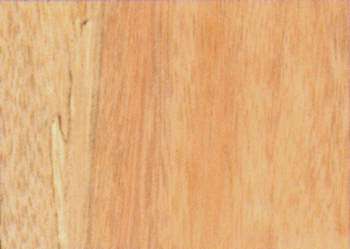
Ajakarna (Vateria indica)
Family: Dipterocarpaceae
Common names: Ajakarna, Bilidupa, Damar blanche, Damar tree, Damar white, Dhup maram, Dhup white, Dhupa, Dhupa paini, Dhupa-paini, Dhupada, Dupa-mara, Gugle, Hal, Illupathla, Illupothla, Indian copal, Indian copal tree, Kondricam, Maddi dhupa, Maddi-dhupa, Malabar whie piney, Munda dupa, Munda-dhupa, Paini, Paini mara, Payani, Payin, Perum piney, Piney du malabar, Piney maram, Piney varnish tree, Piney-maram, Sal-dhupa, The piney varnish, Vallay-kungiliam, Valley kungiliam, Velapiney, Vella kondrikam, Vella-hondrikam, Vella-paine, Vella-payin, Vellai kandrikan, Vellapine, Vellapiney, Vellei kundrikam, Vellei-kuntrikam, Velthapaini, White damar tree, White dammer of Southern India, White dhup
Distributed in: India (Oceania and S.E. Asia)
Common uses: Boat building (general), Boxes and crates, Chemical derivatives, Flooring, Heavy construction, Joinery, Ladders, Light construction, Matches, Millwork, Mine timbers, Plywood, Plywood: veneer (marine), Toys
Tree size: Trunk diameter is 150-200 cm
Colors: the heart isWhite, Yellow to golden-yellow to orangeand the sapwoodWhite, White to yellow.The grain isStraight, the textureMedium to coarseand the lusterLustrous
Natural durability: Sapwood is susceptible to wood staining fungal attack, Susceptible to insect attack
Kiln Drying Rate: Naturally dries quickly
Drying Defects: Distortion, Splitting
Ease of Drying: Slowly
Comments: General finishing qualities are rated as good
Cutting Resistance: Easy to saw
Gluing: Fairly Easy to Very Easy
Moulding: Fair to Good
Movement in Service: Fair to Good
Nailing: Fairly Easy to Very Easy
Planing: Fair to Good
Resistance to Impregnation: Permeable sapwood
Response to hand tools: Easy to machine
Veneering qualities: Veneers easily, Veneers moderately easy
Screwing: Fairly Easy to Very Easy
;
Polishing: Very Good to Excellent; Staining: Very Good to Excellent; Varnishing: Very Good to Excellent;
- Numerical data Metric
- Numerical data English
- Strength properties
- References
 |
 |
 |
 |
| Item |
Green |
Dry |
Metric |
| Specific Gravity |
|
|
|
| Density |
|
560 |
kg/m3 |
| Bending Strength |
542 |
849 |
kg/cm2 |
| Crushing Strength |
233 |
391 |
kg/cm2 |
| Hardness |
|
|
kg |
| Impact Strength |
|
55 |
cm |
| Shearing Strength |
|
|
kg/cm2 |
| Stiffness |
117 |
135 |
1000 kg/cm2 |
| Tangential Shrinkage |
|
|
% |
| Radial Shrinkage |
3 |
|
% |
| Weight |
544 |
432 |
kg/m3 |
| Maximum Load |
|
|
cm-kg/cm3 |
| Toughness |
|
|
cm-kg |
| Static Bending |
|
|
kg/cm2 |
|
 |  |  |  | | Item | Green | Dry | English | | Bending Strength | 7711 | 12078 | psi | | Density | | 35 | lbs/ft3 | | Impact Strength | | 22 | inches | | Maximum Crushing Strength | 3324 | 5570 | psi | | Stiffness | 1665 | 1923 | 1000 psi | | Weight | 34 | 27 | lbs/ft3 | | Radial Shrinkage | 3 | | % | | Tangential Shrinkage | 10 | | % | |
Density (dry weight) = 31-37 lbs/cu. ft.
Modulus of Elasticity (stiffness) = medium
Max. crushing strength = medium
Density (dry weight) = 38-45 lbs/cu. ft.
Toughness-Hammer drop (Impact Strength) = very low
Toughness-Hammer drop (Impact Strength) = low
Shrinkage, Tangential = large
Shrinkage, Radial = small
Bending strength (MOR) = medium
Bending strength (MOR) = low
Bourdillon, T.F.,1908,The Forest Trees of Travancore,Travancore Government PressFundter, J.M.,1982,Names for Dipterocarp timbers and trees from Asia,Pudoc, Wageningen, NetherlandsGamble, J.S.,1902,A Manual of Indian Timbers,Sampson Low, Marston & Co. LondonKadambi, K.,1957,Vateria indica Lina,Indian Forester 83(5) pp317-23Nazma,1981,A handbook of Kerala Timbers,Kerala Forest Research Institute Research Report, No.9Pearson, R.S., Brown, H.P.,1932,Commercial Timbers of India,Govt. Printer Calcutta,2 volsSekhar, A.C.,1967,Some Indian Timbers Equivalent to Foreign Timbers,Van Vigyan 5(1&2,pp18-24Sweet, C.V.,1922,Further experiments in the air-seasoning of Indian timbers and general,recommendations as to seasoning methods.,Indian Forest Records IX part V, Delhi, IndiaTewari, M.C., Jain, J.C.,1980,Utilization of Secondary Species,Journal of the National Building Organization 25(2) pp1-6
|








